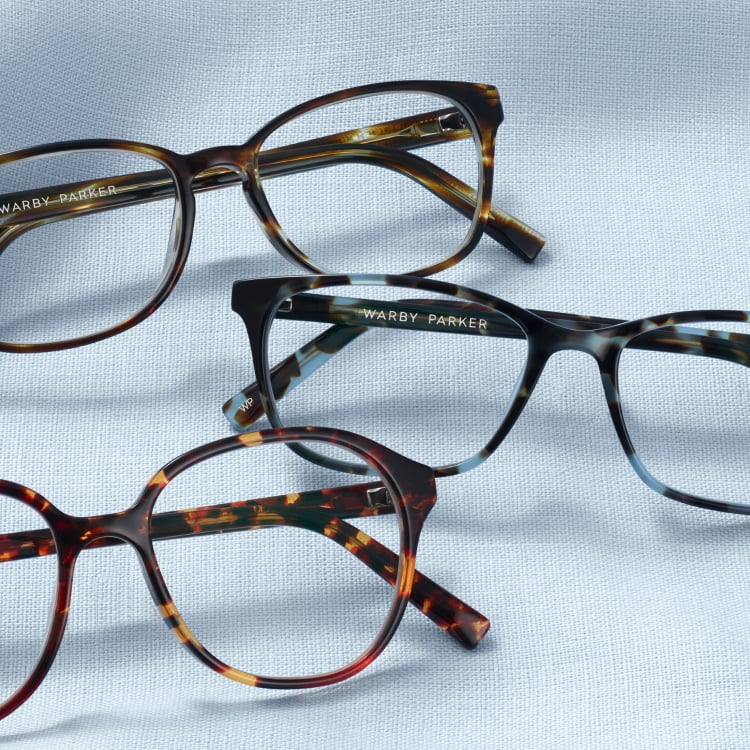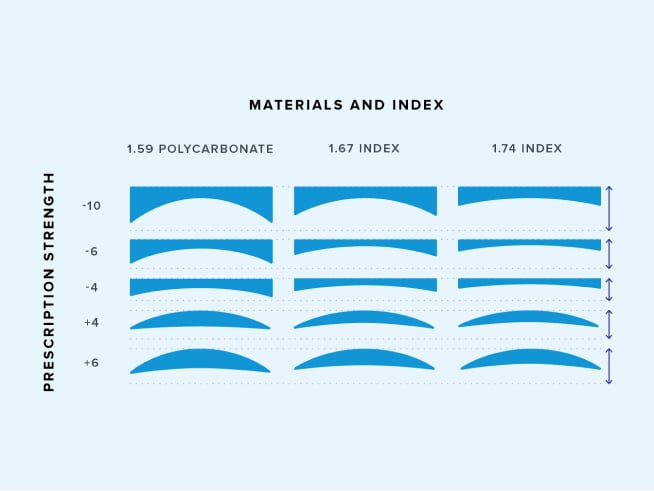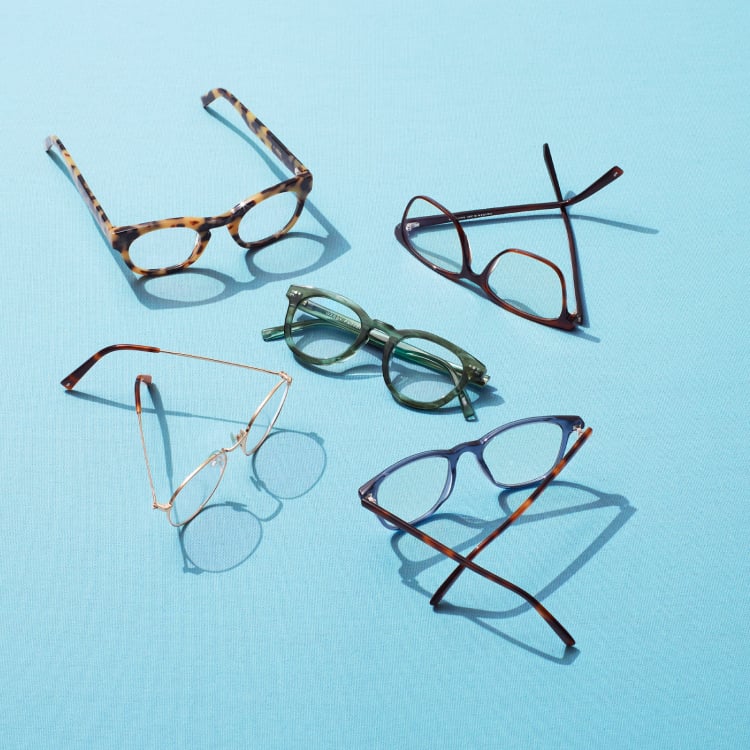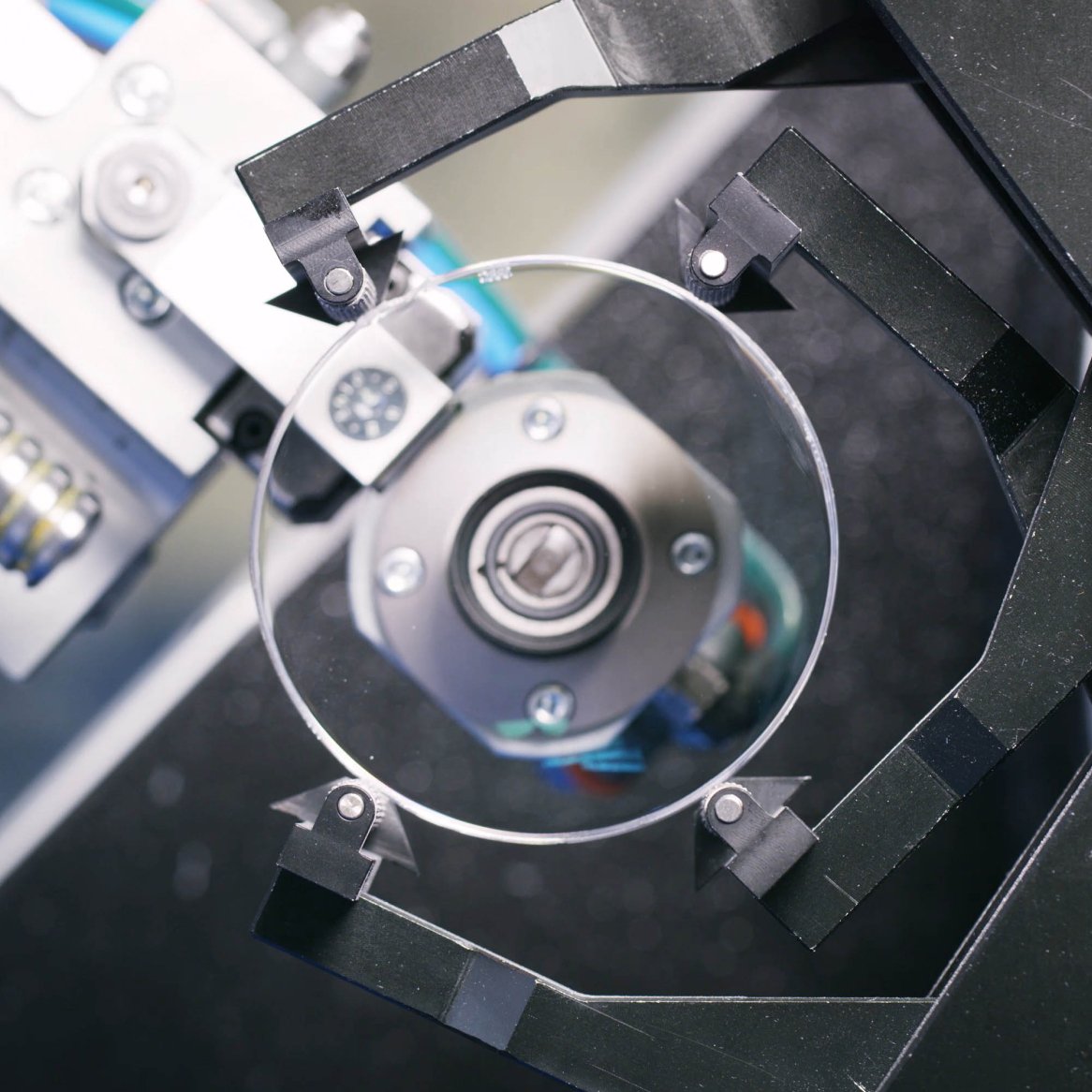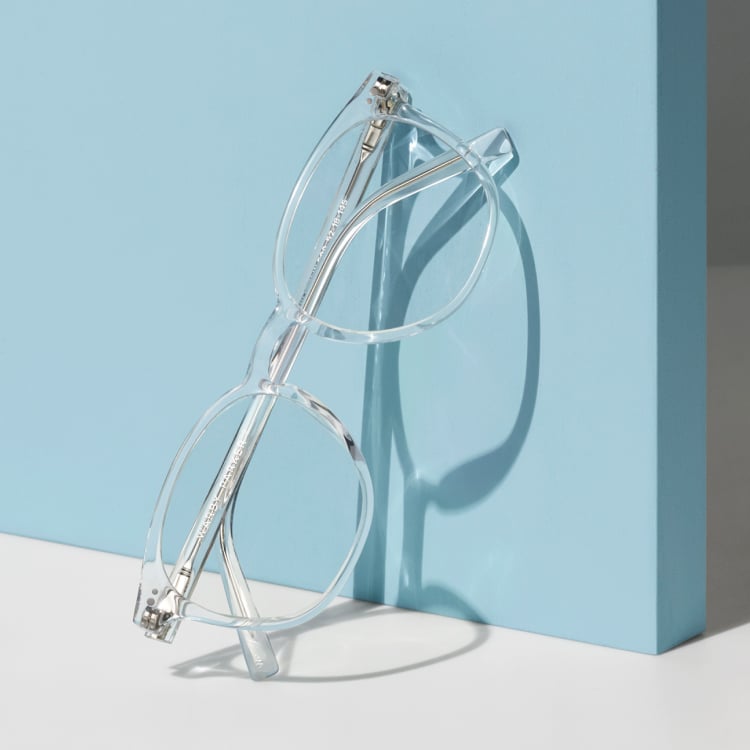Fun fact: Lenses help you see by bending light. High-index lenses are lenses that bend light more effectively than other types of eyeglass lenses due to their higher index of refraction. They allow people with strong prescriptions to wear glasses with thinner, less noticeable lenses.
High-index lenses can correct for most common refractive errors, including nearsightedness, farsightedness, presbyopia, and astigmatism.
It’s long been believed that stronger glasses prescriptions equal thicker lenses. The media has perpetuated this idea, with its bespectacled characters sporting thick glasses that make their eyes look big and buggy.
But nowadays, technology is dispelling this myth: High-index lenses can accommodate strong eye prescriptions with slim, lightweight lenses in almost any frame.
High-Index Lenses Explained
The term “high-index” refers to the refractive index of a lens. The refractive index is a measure of the lens’s ability to bend light: The higher the refractive index, the more efficient the lens is at bending light and correcting vision.
High-index lenses are therefore quite powerful. They can correct more severe vision problems while taking up the same or less space as other eyeglass lenses.
Basically, the higher a lens’s refractive index, the stronger your prescription can be without necessitating added thickness.
What Are High-Index Lenses Made Of?
Most high-index lenses are made from plastics. The lens material undergoes a specialized manufacturing process to ensure a high index of refraction. There are glass high-index lenses as well, but they’re not prescribed as often.
What Prescription Strengths Need High-Index Lenses?
Eye prescriptions of +/-4.00 and higher can benefit from high-index lenses. We recommend 1.67 high-index lenses for people with prescriptions between +/-4.00 and +/-8.00, and 1.74 high-index lenses for people with prescriptions +/-8.00 and higher.
People with lower prescription strengths typically won’t notice a difference in thickness or improved vision by opting for high-index lenses. However, your optometrist or optician will always be the best judge of what will work best with your prescription.
What’s the Difference Between High-Index Lenses and Other Lenses?
High-index lenses are typically thinner and can be lighter in comparison to other lens types. For example, a standard plastic lens (with a refractive index around 1.50) and a 1.67 high-index lens might have the same prescription, but the high-index lens could be up to 30% thinner. .
Conventional plastic lenses have a refractive index that hovers around 1.50, whereas the refractive index of conventional glass lenses is approximately 1.52. High-index lenses will all be slimmer than these lenses, but the degree to which they’re thinner will vary based on their material, the given prescription, and the frame they’re used in.
High-index lenses usually have their index of refraction included within their name, so you can anticipate how thin they might be by looking at their designated number. The most common types of high-index lenses have refractive indexes of 1.61, 1.67, and 1.74.
What’s the Difference Between High-Index and Polycarbonate Lenses?
Polycarbonate lenses are made from impact-resistant plastic with a refractive index of 1.59. This refractive index makes them thinner than standard plastic lenses, but not as thin as high-index lenses with a higher index of refraction. For example, our 1.67 high-index lenses are about 20% thinner than our polycarbonate lenses.
What’s the Difference Between 1.67 and 1.74 High-Index Lenses?
1.74 high-index lenses are up to 10% thinner than 1.67 high-index lenses. Both have a high index of refraction and can accommodate strong prescriptions, but 1.74 high-index lenses are for especially strong ones: +/-8.00 or higher.
What Are the Advantages of High-Index Lenses?
- They’re thinner, lighter, and less obtrusive within frames, unlike thicker lenses that may protrude outwards. Lower-index lenses can also magnify or shrink the appearance of your eyes, which is not as much of a risk with high-index lenses. .
- They’re versatile. High-index lenses can be single-vision, progressive, and even light-responsive. You can also opt for high-index lenses that filter blue light, and if you’re getting sunglasses, polarized high-index lenses are an option, too. No matter how you’d like to customize your prescription lenses, it’s a good bet that high-index lenses can play along.
- They fit most frames. Your choice of frames won’t be restricted by high-index lenses: Their thin profile enables them to work with many frame styles if you have a higher prescription. (We recommend choosing a frame that centers your eyes behind each lens to reduce the thickness of your lenses. The stronger your prescription, the more important this is! Bigger frames = thicker lenses, regardless of the refractive index.)
- They’re comfortable. High-index lenses won’t sit heavy on your nose and ears, and they’re at less risk of sliding down than thicker lenses.
What Are the Disadvantages of High-Index Lenses?
- They’re not as impact-resistant as other lenses. High-index lenses aren’t always the best choice for children or for someone playing high-contact sports, as they’re slightly more fragile than polycarbonate and other plastic lenses.
- They can cost more than other lenses. Due to their materials and manufacturing process, high-index lenses can add extra cost to your eyewear bill. Some sellers price high-index lenses at hundreds of dollars more than conventional lenses. At Warby Parker, ordering high-index lenses will add $50–$150 to your total.
- They’re more reflective than other lenses. High-index lenses are prone to reflecting light, which can be distracting in bright environments. This property may make it tougher to see and drive at night. An anti-reflective coating is therefore a must for high-index lenses—and all of ours come with this coating already applied.
Can You Have High-Index Lenses in Sunglasses?
Yes, sunglasses can have high-index lenses. High-index lenses can be polarized or have a mirrored coating, so you can style your prescription sunglasses to your heart’s content.
Are High-Index Lenses Worth It?
So: Should you get high index lenses? If their aesthetics appeal to you, high-index lenses are a great way to get the thinnest lenses for a high prescription. When compared to lenses with a lower index of refraction, their benefits outweigh the bump in cost for many wearers.
Interested? Check with your eye doctor or optician, and see if high-index lenses are right for you.

